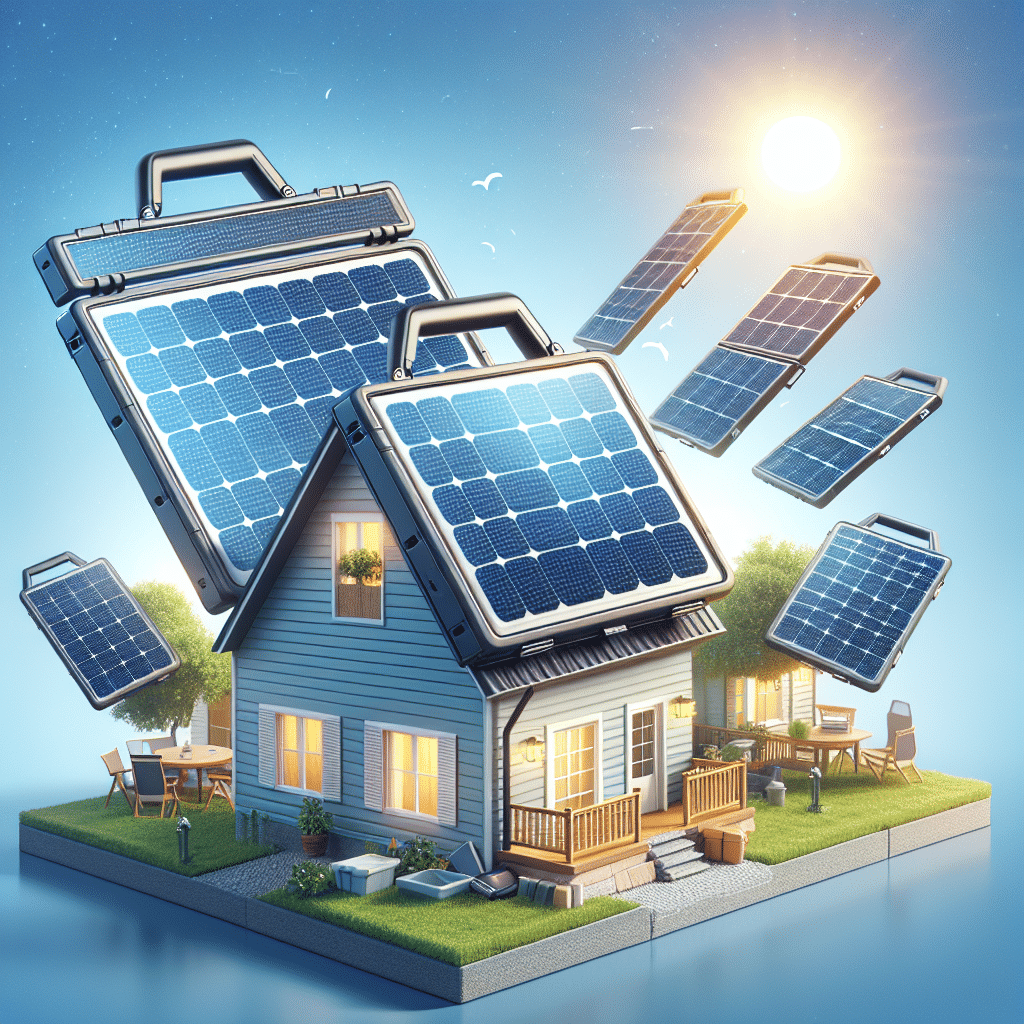Understanding Lightweight Solar Panels
Lightweight solar panels have become increasingly popular among homeowners and businesses looking for efficient and portable solar energy solutions. With advancements in technology, these panels are not only easier to install but also provide significant energy output without the bulk associated with traditional solar systems.
What Are Lightweight Solar Panels?
Lightweight solar panels typically use materials like monocrystalline or polycrystalline silicon, combined with a flexible backing. This results in panels that are significantly lighter than conventional rigid panels. Weighing less than 10 pounds per panel, they can be easily transported and mounted on various surfaces without the need for extensive reinforcement.
Key Features and Benefits
-
Portability: One of the most significant advantages of lightweight solar panels is their portability. This attribute makes them ideal for camping, RVs, and other mobile applications. Users can set them up quickly in areas without permanent solar installations.
-
Ease of Installation: Many lightweight systems come with user-friendly installation kits, allowing for straightforward setups without professional help. This DIY-friendly approach minimizes labor costs and makes solar energy accessible even to novice users.
-
Versatility: Flexible solar panels can conform to various surfaces, including roofs with irregular shapes. This feature allows for more installation options, maximizing exposure to sunlight without compromising aesthetic appeal.
-
Durability: Advances in materials mean that lightweight panels maintain high levels of efficiency while being resistant to harsh weather conditions, including wind and rain.
Types of Lightweight Solar Panels
1. Monocrystalline Solar Panels:
These panels are made from single-crystal silicon, resulting in higher efficiency rates—typically 15% to 22%. Their compact design and efficiency make them great for limited spaces.
2. Polycrystalline Solar Panels:
These are made from multiple silicon crystals and are slightly less efficient, offering ranges of 13% to 16% but tend to be more affordable. Their lighter weight aids in simple installation.
3. Thin-Film Solar Panels:
Among the lightest available, thin-film panels use a variety of materials, such as cadmium telluride or amorphous silicon. They are best suited for applications needing significant flexibility but may have lower efficiency ratings compared to crystalline options.
Installation Techniques for Lightweight Solar Panels
Roof Installations
Lightweight solar panels can be easily mounted on rooftops using specialized brackets and mounting systems. Key steps and requirements include:
- Determine Placement: Position panels for maximum sun exposure, usually facing south and at an angle matching your geographical location.
- Install Mounting Brackets: Secure the mounting brackets to the roof using screws, ensuring they are tightly fixed.
- Panel Attachment: Clip or slide the panels into the brackets. Ensure all connections are secure for safety.
Portable Ground Installations
For those seeking mobility, lightweight panels can be used on the ground:
- Setup Position: Choose a flat and open area where trees or buildings do not obstruct sunlight.
- Use Stands: Employ adjustable stands for optimal solar angle throughout the day. Many lightweight solar panels come with built-in stands for easy deployment.
RV and Camping Applications
Lightweight solar panels are perfect for RVs and camping trips, providing essential power when needed:
- Install Roof Racks: Most RVs have designated lightweight brackets (often included with solar kits) for mounting panels.
- Connection: Connect the solar panels to the RV battery using a charge controller to regulate flow and prevent overcharging.
Maintenance of Lightweight Solar Panels
Even though lightweight solar panels require minimal upkeep, routine maintenance prolongs their lifespan and efficiency:
-
Cleaning: Dust or debris can hinder performance. Cleaning panels with mild soap and water or using a soft brush aids in maintaining optimal energy capture.
-
Check Connections: Periodically inspect wiring and connectors for wear or corrosion to prevent potential energy loss.
Economic Impact
Investing in lightweight solar panels can also contribute to long-term financial savings. Although the initial costs can be higher than traditional panels, the reduced installation costs and increased convenience often lead to a quicker return on investment. Furthermore, many governments provide incentives and tax credits for solar energy adoption, making the financial burden even lighter.
Choosing the Right Lightweight Solar Panel
When selecting lightweight solar panels, consider the following factors:
- Wattage Requirement: Determine your energy needs to assess how many panels will be required to meet your energy consumption.
- Efficiency Ratings: Higher efficiency ratings might incur more costs upfront but yield more energy output.
- Budget: Evaluate manufacturer guarantees and warranty offerings to ensure long-term reliability without breaking the bank.
Environmental Considerations
Opting for lightweight solar panels contributes positively to environmental conservation. Solar energy is a renewable resource that reduces dependence on fossil fuels, helping to minimize greenhouse gas emissions. This eco-friendly energy solution not only supports a greener planet but also resonates with the growing demand for sustainable energy practices.
Conclusion
Lightweight solar panels make solar energy accessible, efficient, and versatile. Their ease of installation, portability, and adaptability to various scenarios make them an excellent choice for anyone looking to harness the sun’s power. Consider your installation environment, energy needs, and budget when selecting the ideal lightweight solar panel solution to enjoy long-term benefits and contribute positively to environmental sustainability.
